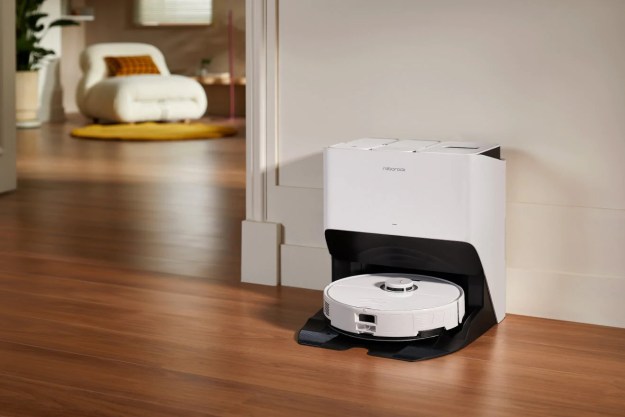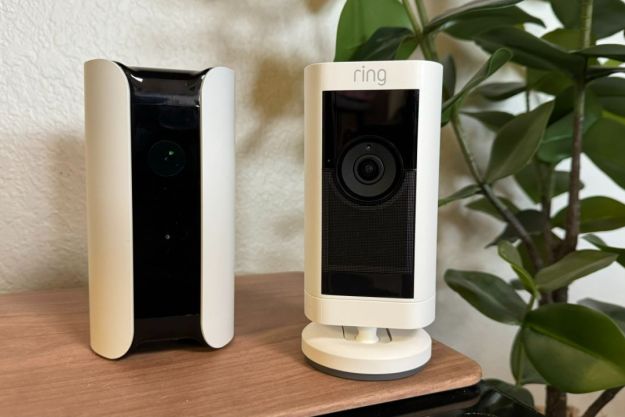Let me just say that I do not like toilet humor. The food-poisoning scene in Bridesmaid did not make me chuckle. However, as the Home Editor at Digital Trends, sometimes I must write about bathrooms and their components, toilets included. That’s why, when Tushy asked if I was willing to try out its bidet, I agreed to put my butt on the line. Sigh.
Tushy doesn’t make full-fledged bidets; rather, they’re a sort of retrofitted device that you affix to your toilet to get all the benefits of a regular bidet — namely, water aimed at your behind. You’re meant to use less toilet paper and feel cleaner than you do without the jet of water spraying you. Here’s what I learned from my time with the Tushy.
Pardonnez-moi?
The first reference to a bidet dates back to 1710 in France. Since then, they’ve become popular throughout parts of Europe, East Asia, the Middle East, and South America. Originally they were separate from the toilet, but manufacturers such as Toto started making “washlets,” electronic bidets built into toilet seats. Some Toto models require an outlet and can sell for over $1,000, and include things like seat heating and deodorizers.
The Tushy comes in two models: a cool bidet ($69) and a warm-and-cool bidet ($84). The first doesn’t require a particularly special configuration — though you’ll need to make sure you have several inches of space on the right side of your toilet — but the temperature-control version needs to hook up to the sink’s warm water.
The hook up
The Tushy comes with an instruction booklet, and there’s also a video you can watch to figure out how to install it. (Warning, the instructions are — dare I say it? — cheeky.) I attached the cool version to my toilet, and it took about 20 minutes and a couple of spurts of water from an improperly tightened connector to get it right.
Tushy touts itself as more hygienic and better for the environment than toilet paper.
The hardest part was definitely maneuvering in the limited space between my toilet and the bathroom cabinet.
Essentially, you turn off the water supply to the tank and drain it; remove the seat; disconnect the hose from the toilet; attach an adaptor to the hose, the toilet, and the Tushy; put the Tushy on the toilet; and reattach the seat. If the connections are tight, you won’t spray water all over your floor when you open the valve again. This was not the case for me. But after fiddling with the adaptor, I managed to get everything properly connected.
Spray time
The cool Tushy has only a single knob, as well as a switch to let you change the nozzle’s spray angle. Turn the knob left and water dribbles out to clean the nozzle. Turn it right, and welcome to your bidet experience. It definitely takes some finessing to learn the proper amount of pressure. The same goes for the nozzle adjuster. Get it wrong, and there will be — shudder — backsplash. The adjuster is meant to let women use the Tushy in both the front and the back. You’ll likely find some combination of the knob, adjuster, and your own shimmying that works best for you.
At least in my case, the water coming out of the supply is cool but not cold. A freezing jet of water would have been a deal breaker. After a few days of having it installed, I became a regular Tushy user. My husband, on the other hand, refuses to try it.
“So, I see you got a bidet,” is a phrase a friend recently said to me after using my bathroom. The Tushy is definitely hard to miss. Your visitors will probably ask you about it, and then you’ll have to give your views on bidets and the benefits and drawbacks thereof. You should dwell on that fact when you’re considering a purchase.
A waste?
Tushy touts itself as more hygienic and better for the environment than toilet paper. There haven’t been a lot of studies around which is better healthwise, and there are conflicting results from the few that exist. While you’re obviously using more water with a bidet, some argue that cutting down on TP offsets it, as it takes quite a bit of H2O to produce. You likely won’t ditch toilet paper entirely, though. At the very least, you’ll want some to dry off.
Warranty
Tushy offers a 12-month guarantee on equipment and parts, as well as a 60-day return policy for undamaged devices. If you’re curious how the company handles returns, you have to answer a few questions as to whether or not you’ve tried to install or use it, because due to government regulations, it needs to “thoroughly inspect, process, and sanitize every returned product.”
Conclusion
One of the more unique products I’ve tested for Digital Trends, the Tushy definitely changed my outlook on bidets. The health benefits compared to toilet paper may be difficult to prove, but the odds are good you’ll feel a difference.
What are the alternatives?
Tushy certainly didn’t invent the bidet-as-attachment. There’s the Boss Bidet Attachment ($60), which has two nozzles — front and rear. And for a more robust solution, Toto invented the washlet solution, which packs more tech into either a seat or full-on toilet. These range from around $600 for the seat to over $3,000 for the whole shebang.
How long will it last?
Made mostly of plastic, the Tushy seems pretty capable of withstanding wear and tear. It’s fairly easy to remove, so you could take it with you if you move. You’ll definitely want to be vigilant about regular cleaning, of course.
Should I buy it?
Yes – but ultimately, to bidet or not to bidet is a personal choice. The Tushy is certainly a more affordable choice than a washlet, so you won’t be flushing too much money away if you decide to give it a swirl.
Highs
- Fairly easy to install
- Relatively inexpensive
- GIves you that fresh feeling
Lows
- It can take a while to master
Editors' Recommendations
- Blink Mini 2 vs. Ring Stick Up Cam Pro: Which is the best security camera?
- Yale’s newest smart lock is designed for renters
- Ring Battery Doorbell Pro vs. Aqara G4: Which is the better video doorbell?
- Narwal Freo X Ultra vs. Narwal Freo: What’s the difference between these robot vacuums?
- Best cordless vacuum deals: Big discounts on Dyson, Shark, and more




